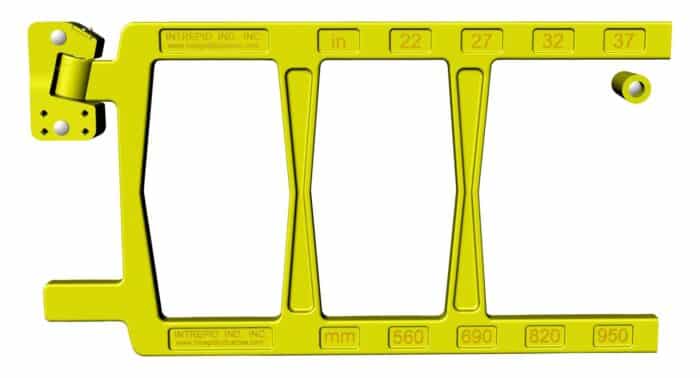What separates a well-run industrial site from one that’s constantly firefighting safety issues? A big part of it comes down to how seriously they take fall prevention. And when it comes to protecting elevated work areas, mezzanines, loading docks, and ladder openings, one solution stands out: the universal swing gate.
It may not sound like the most exciting piece of equipment, but its role in industrial safety is anything but minor. Think of it as a simple upgrade that does a lot of heavy lifting behind the scenes, quietly reducing risks and keeping people safe without disrupting workflow.
Why Fall Protection Still Gets Missed
Despite the clear dangers of working at height, falls continue to be one of the leading causes of serious injuries in industrial environments. The problem? Gaps in safety systems. Sometimes it’s missing guardrails. Sometimes it’s unprotected ladder openings. Other times, it’s an access point left open because the gate didn’t swing back into place. A universal swing gate addresses these exact gaps. It fills in the missing pieces, quite literally, by covering access points that would otherwise be left exposed.
What Makes It ‘Universal’?
The term “universal” isn’t just a marketing label. It refers to the gate’s ability to fit almost anywhere. These gates are designed to be adjustable in width and easily mount to most standard railings or vertical posts. Whether you’re dealing with a small ladder opening or a wide mezzanine entrance, a universal swing gate can usually be configured to fit.
That flexibility means you don’t have to hunt for a custom part or work around an awkward space. The gate adapts to the setup, not the other way around.
It Swings Shut on Its Own, and That’s the Point
Here’s where it really earns its keep. A universal swing gate is designed to automatically return to its closed position. This self-closing action is key.
In high-traffic areas, relying on workers to remember to close a gate just isn’t realistic. Distractions happen. Fatigue sets in. Someone might be carrying a load or rushing to finish a task. One forgotten step, and you’ve got a fall hazard wide open.
The swing gate eliminates human error from the equation. It closes by default, not by request.
Where You’ll See It Most
You’ll usually spot these gates anywhere fall protection is a legal or safety requirement. Common spots include:
- Ladder access points – So people don’t step into thin air at the top of a climb.
- Mezzanine levels – To prevent falls while moving goods or stepping near the edge.
- Loading docks – Where truck bays or platforms often have big drop-offs.
- Walkways with interruptions – Such as gaps in railings around equipment.
In all these settings, the gate serves as both a visual cue and a physical barrier. It’s not just about compliance; it’s about practical, everyday protection.
Installation Is Straightforward
One of the best parts of a universal swing gate? You don’t need to shut down operations or call in a full crew to install it. They’re typically designed to bolt directly onto existing handrails or posts. Most come with mounting hardware and don’t require custom fabrication.
The goal here is to make safety easier, not more complicated. A gate that can be installed in under an hour with basic tools fits that bill perfectly.
Built to Take a Beating
In industrial environments, gear is often knocked, bumped, and subjected to various forms of wear. That’s why universal swing gates are usually made from steel or heavy-duty aluminum, with powder coating or galvanized finishes to resist corrosion.
They’re built to last, even in harsh conditions. Whether it’s exposure to chemicals, temperature fluctuations, or heavy equipment traffic, a reliable swing gate can withstand the elements without requiring constant maintenance.
It’s About Compliance, But It’s Also About Culture
Let’s be honest, some safety measures are implemented just to tick the box. But a universal swing gate offers more than just regulatory peace of mind. It signals that your facility is proactive about risk, not reactive.
When workers see that every opening is secured and every gap is addressed, it builds trust. It shows that shortcuts are unacceptable and that their safety is not optional.
That’s how safety culture grows. Not from slogans on the wall, but from small, smart choices made consistently.
Mistakes It Helps Prevent
There’s a reason this gate has become so widespread. It helps prevent:
- Falls through unguarded edges
- Accidents from forgotten open gates
- Injuries due to blocked walkways being improperly accessed
- Damage from forklift or equipment impact in areas meant for foot traffic
In short, it solves for a lot of the most common and avoidable safety mishaps.
Not Just for Big Warehouses
It’s not only massive facilities that benefit from universal swing gates. Even small workshops, maintenance bays, and compact manufacturing spaces often have unprotected edges or access points that pose a risk. The beauty of this type of gate is that it fits anywhere safety is needed, not just in large-scale environments.
That adaptability means no one is priced out of proper protection, and no space is too small for smart planning.
Safety That Moves With You
Workplaces change. Equipment gets relocated. Layouts evolve. A universal swing gate moves with you, adjusts as needed, and stays reliable no matter the setup.
When safety gear works quietly in the background, doing its job without needing attention or reminders, that’s when you know it’s doing something right.

